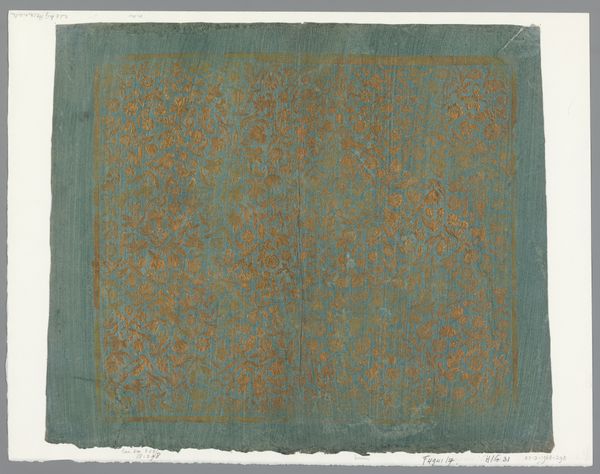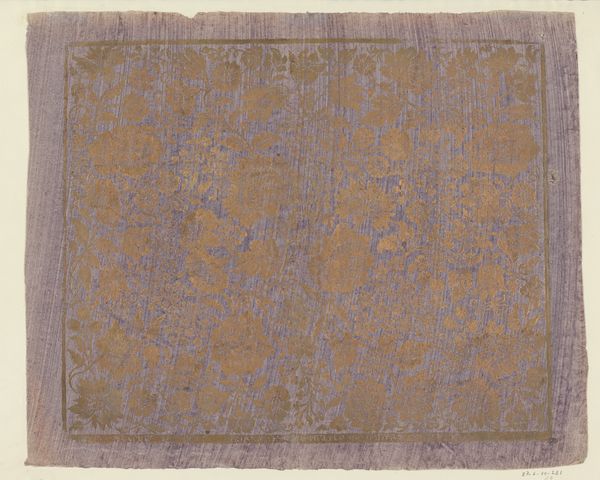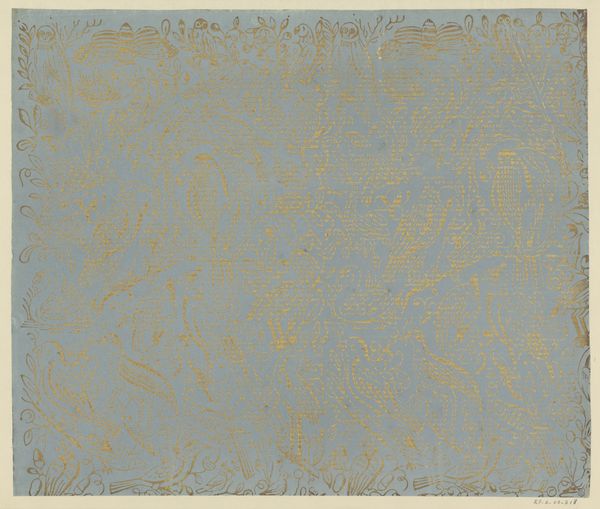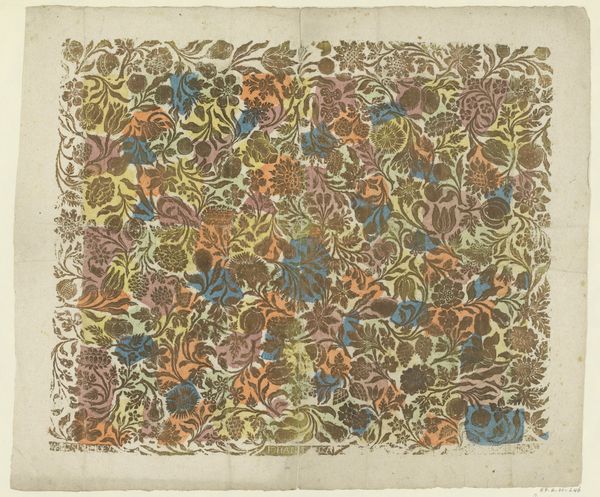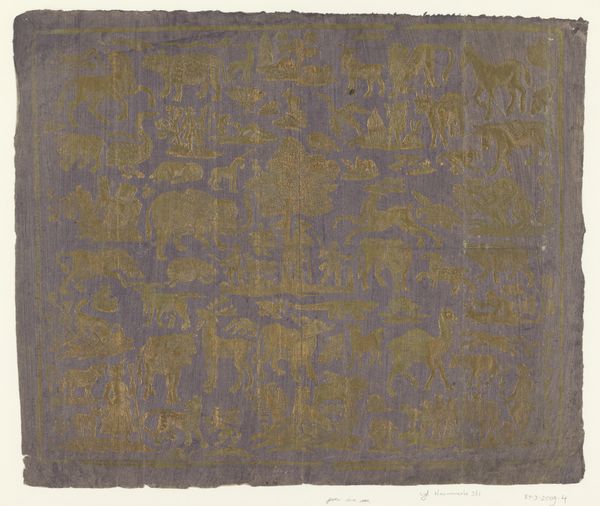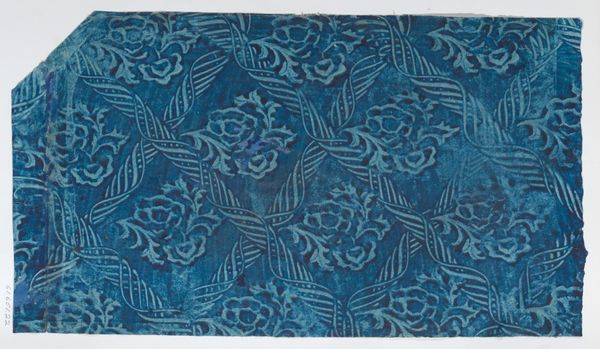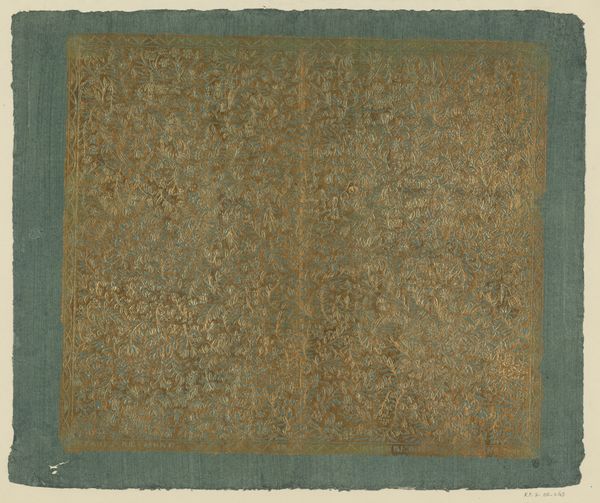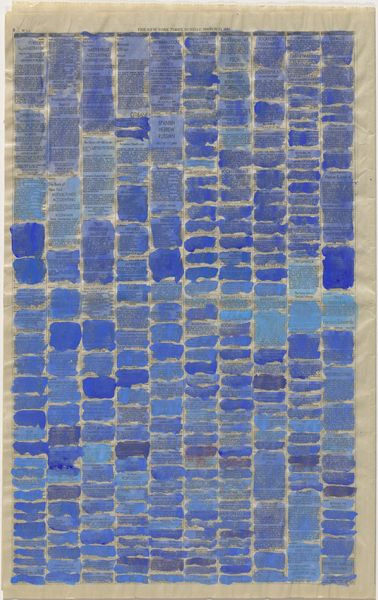
drawing, paper, watercolor
#
drawing
#
natural stone pattern
#
rippled sketch texture
#
naturalistic pattern
#
organic
#
paper
#
watercolor
#
chalky texture
#
organic pattern
#
pattern repetition
#
watercolour bleed
#
decorative-art
#
imprinted textile
#
layered pattern
#
organic texture
#
rococo
Dimensions: height 314 mm, width 378 mm
Copyright: Rijks Museum: Open Domain
Curator: This work, believed to be created between 1768 and 1772 by Conrad Koenig, is titled "Blad met ranken met bloemen en een vogel," rendered with watercolor and drawing on paper. Editor: My first impression is one of serene formality. The cool blue tones, coupled with the floral scrollwork, create an atmosphere of restrained elegance. It reminds me of textile patterns on the robes worn in portraits of elite women. Curator: It's intriguing to situate this artwork within the broader decorative art traditions of the Rococo period. The design reflects a larger interest in asymmetry, ornamentalism, and the natural world—values aligned with the shifting political landscapes and increased engagement with trade and global aesthetics during that era. Editor: Absolutely, and let's note how the repetition of the botanical motif, although seemingly organic, betrays a formal structural intent. See how the curling vines and blossoms interlock, creating a subtly complex pattern that relies on mirroring and calculated variation. This blend of naturalistic representation with underlying geometrical control creates a beautiful tension. Curator: Looking at this today, I am particularly interested in how Koenig navigates notions of gender and the commodification of nature. Botanical illustration, such as this, provided one way for women, who had restricted access to the formal art world, to practice their artistic aspirations. By making this type of floral textile patterns accessible, did it impact textile production? Editor: Indeed, such inquiry shifts our perspective from mere aesthetics to critical contextualisation, but I feel we must address the basic fact that Koenig was a man! How interesting it is, then, to reconsider Koenig's structural method given this point. Did he try to 'one up' the achievements made by women artists from his period? Curator: Such gender dynamics inevitably permeated artistic expression. The pattern in question then seems not merely decorative, but laden with implicit power relations reflecting social hierarchies and assumptions around creative authority. Editor: Yes, now that I think about it. Looking closer at the colour composition, you can detect subtle areas where the watercolour application appears somewhat uneven, betraying what seems to be franticness beneath its calculated exterior. The artist's emotions perhaps, at that time, or in later times? Curator: Ultimately, it's such intersectional inquiries that provide the richest perspectives when engaging with artworks across time and space. This allows for further interpretations on the work. Editor: Precisely. These visual subtleties, often overlooked in favor of grand narratives, speak volumes.
Comments
No comments
Be the first to comment and join the conversation on the ultimate creative platform.
